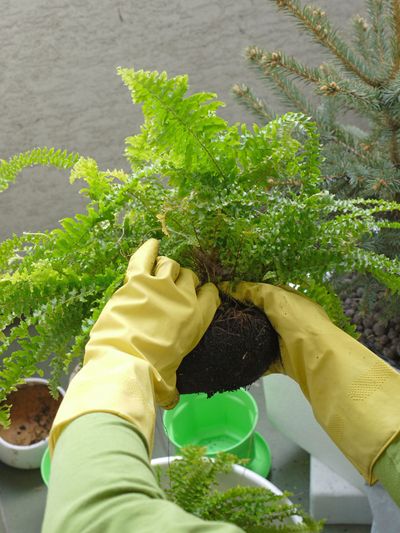Fern Transplant Info
Most ferns are easy to grow, especially when all their basic needs are met. Most varieties grow well in, and even prefer, shady areas with damp, fertile soil, though some types will thrive in full sun with moist soil. Before taking on any type of fern transplant, you’ll want to be familiar with the particular species you have and its specific growing conditions. Ferns make wonderful additions to woodland gardens or shady borders and contrast well with hostas and other foliage plants.
When to Transplant Ferns
The best time to transplant ferns is in early spring, while still dormant but just as new growth begins to emerge. Potted ferns can usually be transplanted or repotted anytime but care should be taken if this is performed during its active growth period. Before you move them, you may want to have their new planting area well prepared with plenty of organic matter. It also helps to move a fern plant in the evening or when it’s cloudy, which will lessen the effects of transplant shock.
How to Transplant a Fern
When transplanting ferns, be sure to dig up the entire clump, getting as much soil with it as possible. Lift the clump from its bottom (or root area) rather than by the fronds, which can lead to breakage. Move it to the prepared location and cover the shallow roots with a couple of inches (5 cm.) of soil. Water well after planting and then add a layer of mulch to help retain moisture. It may also help to cut back all the foliage on larger ferns after planting. This will allow the fern to focus more energy on the root system, making it easier for the plant to establish itself in its new location. Spring is also the ideal time to divide any large clumps of fern that you might have in the garden. After digging up the clump, cut the root ball or pull apart the fibrous roots and then replant elsewhere. Note: In many areas, it may be illegal to transplant ferns that are found in the wild; therefore, you should only transplant them from your own property or those that have been purchased.
